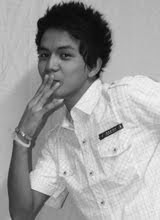
(Vol. XXVII No. 19, Editorial Cartoon)
The most anticipated event of the whole Negros Oriental State University (NORSU) system this school year is now kicking — the 82nd Founders Week Celebration, bearing the theme “Industry and Hard Work for Productivity.” Efforts for a successful Founders Week Celebration can now be felt in the atmosphere and even at the thick of the preparations.
Early this semester, before everything was being put up, the League of Student Organizations headed the clean up drive at the back of the Science and Technology Building – the area which was dubbed by many as the “mini Payatas” of NORSU because of the piles of garbage and other scrap materials. Days passed, the ugly space was cleared. Now, the place is transformed into a clean area as 19 booths were built on it.
Other booths of different student organizations are also found in different areas of the campus. As observed, the registered student organizations were in the busy clock of constructing their booths in the past days. Heavy rains did not stop their eagerness to build their homes to stay during the occasion.
With the remaining number of hours left, colleges and satellite campuses are also at the thick of their preparations—from simple props to detailed costumes; from easy hand and foot steps to splits, tumbling, and powerful moves; from extra characters to the stars of the presentations — all for the activities that they will be participating in during the anticipated event. Organizers of the major events of the week such as the Mister and Miss NORSU Pageant, Cheerleading competitions, and Hugyawan Festival are trying harder to present nothing but the best. To note, Hugyawan this year promises another kind of fun as it is set to feature the hilarious encounter with the most popular Hollywood and Pinoy superheroes.
But while others are exerting too much effort and time, other students are also having their own plans and focus. Some are planning or have already returned to their hometowns for a weeklong vacation. Some thought that Founders Week Celebration means no classes – some days to detach from their student lives. Some thought that the occasion is only for talented and confident students to stage their skills on various competitions; for organization leaders and active members to head and organize the events; and as well, for those who are in the position to make the celebration possible.
Let every Norsunian be reminded that the Founders Week Celebration is to commemorate the existence of NORSU. It serves as an instrument for us, Norsunians, to pay tribute to this university—this university that has provided us with the kind of education that we need for us to have a better future. Thus, let us not take this celebration for granted. Let us show our gratitude to this university by cooperating and by giving our hundred percent support for the weeklong celebration.























